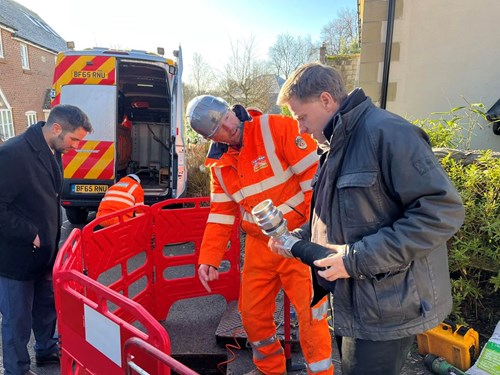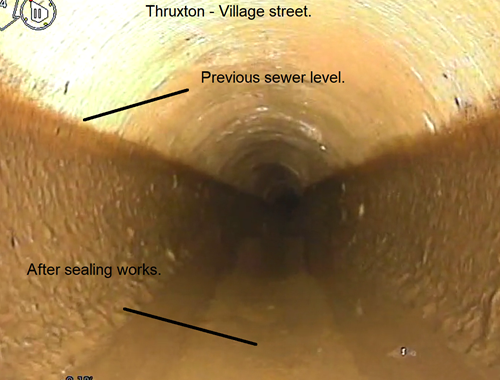An innovative pilot project to prevent high groundwater levels inundating sewer pipes and flooding communities in an area of Hampshire has secured game-changing results with a massive reduction in the need for emergency tankers.
Southern Water’s Clean Rivers and Seas Task Force have been rolling out solutions in their pathfinder project near Andover since late 2022, focusing on sealing pipes, including those privately owned (which is up to half of the network).
As in other areas across the South East, groundwater has been forcing its way into both public and private sewers – causing wastewater flooding when levels creep critically high.
Until recently in this area Southern Water has utilised a large fleet of tankers around the clock in these instances - to ensure customers can continue to flush their loos and use their baths, showers and sinks, without having to worry about their homes and communities flooding.
But now, as part of the Task Force’s wider work to prevent both surface and groundwater from overloading the sewer network and in doing so reducing flooding and storm overflow events, the team has sealed 300 private pipes, totalling a distance of 2.5km, 2km of Southern Water pipes, and nearly 70 manholes.
This has been done by utilising an innovative chemical called Tubogel, along with traditional sewer lining methods. Meanwhile, to monitor and investigate the full extent of groundwater infiltration in the area, three boreholes have been drilled, 36 sewer level monitors and 26 temperature sensors installed, and improved technology introduced at local pumping stations to target and measure this issue.

Southern Water previously relied on a fleet of 36 tankers in this area to remove the excess flows, but since Christmas – even in the face of the highest groundwater levels for more than 20 years – that number is down to just five, or an 86% reduction in use.
Not only is this reducing pressure on our network, but it is also protecting our precious environment and reducing disruption to the communities of Amport, East Cholderton, Monxton, Fyfield, Kimpton, Abbots Ann and Thruxton through tanker movements. The cost has also been significant, with the savings offering the chance to divert future funds into other activities.

Keith Herbert, from Southern Water’s Clean Rivers and Seas Task Force, said:
“It is horrible to see the impact of communities affected by groundwater flooding. We are pleased to see some of the innovative solutions are having a positive impact. Our desire is to learn and replicate this approach in other regions.”
“This project couldn’t have happened without the backing of the local community, who have engaged with us and supported us to carry out work on private apparatus. We would like to thank them for their patience.”
Throughout the project, we have also engaged regularly with the Pan Parish Forum and held regular fortnightly catch-up meetings and a number of drop-in sessions with the community.
Janet Wright, from the Pan Parish Forum, added:
“Southern Water has a committed plan to re-line the sewers, both public and private, which is fantastic. It is great that we can see this happening and it is making a difference.”
We’re aiming to complete all work in this area by March 2025.
Keith added:
“We know there are many areas across our region impacted by groundwater, and this approach could be replicated elsewhere in future.”
We have outlined spending of £1.5bn between 2025 and 2035 to get to the root cause of all storm overflows across our region through our Clean Rivers and Seas Plan, with our pathfinder projects shaping this work. You can see how we intend to tackle storm overflows across our region here.